Restaurant marketing is a crucial part of managing a restaurant business. Good restaurant marketing allows you to reach new customers, build brand loyalty, boost engagement on your website, and drive overall business. That said, there are a variety of tools that you can use for different restaurant marketing strategies. In this guide, I broke down […]
Restaurant marketing is a crucial part of managing a restaurant business. Good restaurant marketing allows you to reach new customers, build brand loyalty, boost engagement on your website, and drive overall business. That said, there are a variety of tools that you can use for different restaurant marketing strategies.
In this guide, I broke down the best tools for five key restaurant marketing areas:
Let’s explore the best marketing software for each restaurant marketing strategy and some key information to consider when deciding for your business.
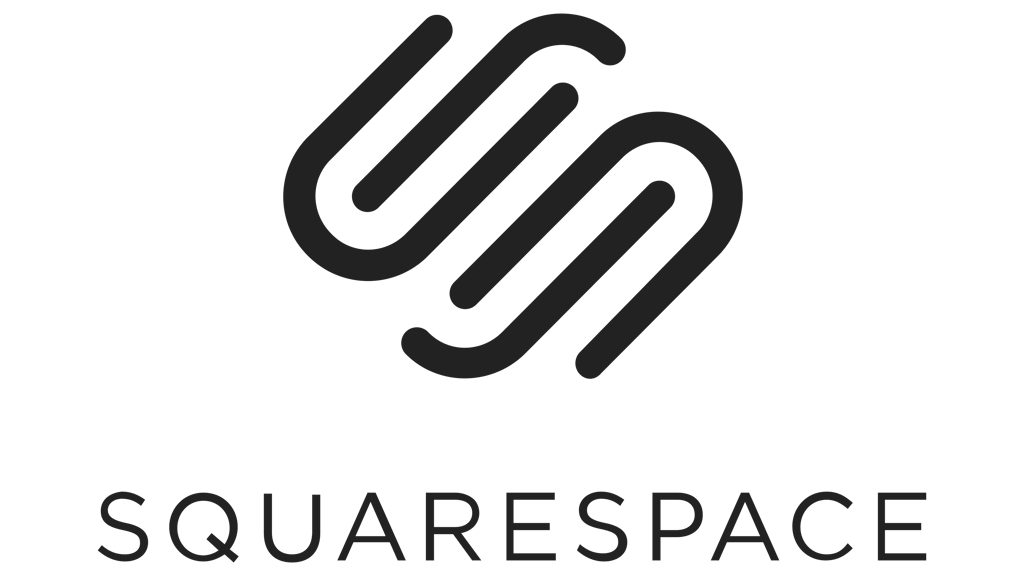
Squarespace makes it easy to create a professional, mobile-optimized website that showcases your menu, takes reservations through partners like Tock, and tells your restaurant’s story. Built-in SEO tools, social media integrations, and beautiful templates designed specifically for food businesses help you build a complete digital presence without needing technical expertise. Plus, their e-commerce features let you sell gift cards and merchandise.
Visit Squarespace
Use code RHQ10 for 10% off!
The tools below are broken down into specific categories. Each tool was compared to others in its best-for category. The table below offers a quick glance at the top tools across each specific marketing strategy a restaurant is likely to use. These tools are the best at the specific marketing goal for which they’re built.
| My rating | Best for | Starting monthly price | Free trial? | |
| 3.83/5 | An all-in-one POS and marketing solution | $0 | Yes | |
| Visit SpotOn | ||||
| 3.05/5 | Loyalty tools | Custom-quote | No | |
| Visit Punchh | ||||
| 4.03/5 | Social media management | $99/user | Yes | |
| Visit Hootsuite | ||||
| 4.73/5 | Email tools | $20 for 500 contacts | Yes | |
| Visit Mailchimp | ||||
| 4.46/5 | Review & reputation management | $125/location | Yes | |
| Visit Tattle | ||||

Pricing: 4.25/5
Marketing features: 3.75/5
Guest engagement tools: 3.38/5
Support: 3.75/5
Expert score: 3.75/5
SpotOn is one of the best restaurant POS systems on the market, as you can see in my SpotOn review. It offers a fully functional POS system that’s easy to use and is consistently rated as one of the best in the restaurant industry.
SpotOn helps outbid their competitors, though, when it comes to the marketing tools they offer. While many of the tools may come in separate add-ons, SpotOn has almost everything you need to ensure that you can create and grow your marketing efforts with ease and efficiency.
One of SpotOn’s more prominent features is its marketing and review management tools. For example, SpotOn offers an online dashboard where you can track the effectiveness of your campaigns. You can also monitor and respond to reviews across sites in real time, allowing total control over how and when you respond to negative criticism or positive feedback.
Combine this with an analytics dashboard that tracks your marketing efforts, and you have an all-in-one system that makes my list for the best in 2025. I compared SpotOn to four other major tools for this category:
For this guide, it was important for me to evaluate these tools based on their combined POS and marketing prowess. As standalone tools, these fared much better. For example, my TouchBistro review saw the platform earn 3.95 out of 5. And my Lightspeed review saw that platform earn 4.12 out of 5.
What actual users say:
As you can see, SpotOn’s core offerings are great, but customer service can frustrate some. From the reviews online and my rating system, there’s a pattern that SpotOn consistently delivers on the tools as advertised.
Their loyalty and marketing programs are easy to use and offer everything a restaurant owner needs to grow their business. Customer service support is a constant complaint in reviews and is something to be aware of.
According to online reviews and SpotOn’s website, a full onboarding through SpotOn can take anywhere from two to four weeks. Initial setup times can be around a week, but a few weeks are likely needed to fully build out your menus and POS system entries and train your staff on marketing tools.
SpotOn’s customer support can be trivial, but general onboarding is pretty simple due to their online resources and easy-to-use setup tools.
SpotOn’s campaigns set them apart from competitors, with users finding the process quite easy to get into. I suspect this is due to the fact that SpotOn’s dashboard is laid out in a smart and user-friendly way, with clear guidance on how to create a new campaign and edit it to a final product.
The workflow for campaigns starts with selecting the “Marketing” section of the website, then entering “My Campaigns,” and clicking “Create Campaign.” It really is that easy to get going.
Once you create your campaign, you can use your personalized templates or a pre-built template that SpotOn provides. The rest of the process involves guided steps for adding photos, relevant copy, and targeting your marketing campaigns to your intended audience.
I could see the pre-built templates being used more often for newer restaurant marketers, which is a great tool to have. It’s this easy and succinct workflow that leads SpotOn to top my list.
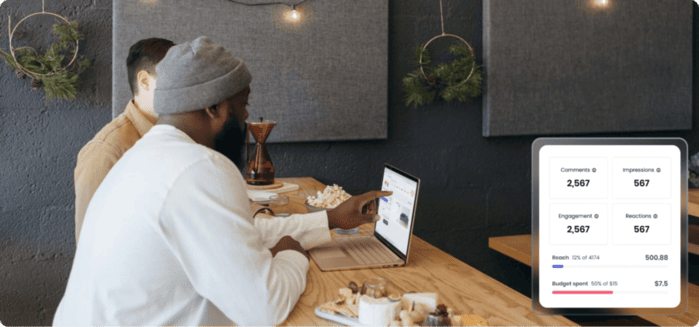
SpotOn also offers a “Restaurant Deals” feature that allows you to create single-use deals or discounts you can send to customers via email and Facebook.
You can find this function within the same “Marketing” section as your campaigns. The system is very smooth, with you deciding the deal, how much is saved on the product, and if you want in-restaurant manual redemption or a QR code redemption.
The process is quick, efficient, and a breeze to manage in order to add another layer to your restaurant marketing strategy.
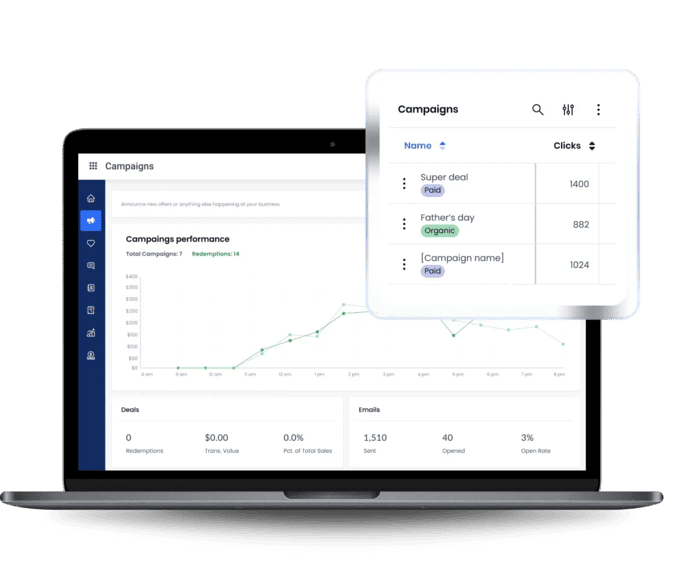
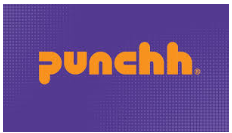
Pricing: 0/5
Loyalty features: 5/5
Advanced features: 5/5
Support: 3.63/5
Expert Score: 3.38/5
If your goal is to create a loyal customer base, you cannot get much better than Punchh. Punchh focuses on itself as a “relationship company,” emphasizing building loyalty over simply building a database of contacts.
What drives Punchh in the loyalty department is its ability to integrate loyalty programs in various ways. You can build loyalty programs based on ranked points, visit counts, or tiered programs.
Punchh operates off of custom quotes, so pricing transparency is lacking. But I feel it’s important to note here that I compared Punchh to two other restaurant loyalty tools (Thanx and Paytronix), and neither of those scores much better in the pricing category. This suggests that the more niche the standalone product, the more likely you’ll have to work directly with the vendor to get started.
A lack of price transparency could also indicate an ease-of-use issue. If customers have to establish a relationship with a vendor, it’s possible they can’t self-start in any capacity. I can only hope that isn’t the case for Punchh, given its support and onboarding systems are limited and seem pretty focused on the user being the key driver of installation.
That said, major brands such as Pizza Hut use the service, and their focus on diverse integrations and a variety of loyalty-building tools makes them the best option for customer loyalty in 2025.
What actual users say:
Punchh’s onboarding seems to be self-reliant with some organizational support. There is an onboarding guide available on the website that can be used to get the system up and running. Punchh University is suggested by the organization in order to learn how to use their site.
Punchh does offer onboarding specialists and an Implementation Team, but it seems to be a mixed bag on how reliant they are. A case study from Fazoli’s seems to indicate full onboarding takes anywhere from three to six months, depending on the scale of business.
While Punchh is the best for loyalty tools, the workflow itself leaves some room for improvement. This is due to the fact that the support on the website is limited, and some of the key features, such as the white-label app, require the Punchh team to be involved.
Additionally, Punchh offers Facebook integrations when signing up that can clog up your system’s customer contact section, so be wary before allowing the recommended integration.
That said, users find the program launches quickly and on schedule. There also seems to be a suite of tools that are always being refined and rolled out to enhance the user experience. But the biggest drawback is the lack of real-time resources for quick or simple questions.
I would recommend asking for as many resources as possible when you sign up. That way, you aren’t beholden to a response from their support team over simple, easy-to-fix issues.
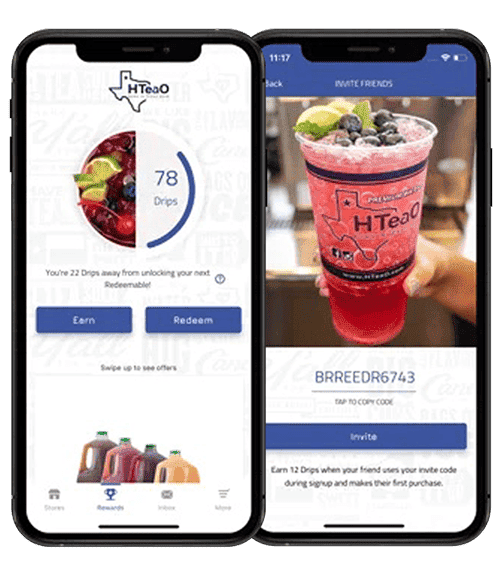
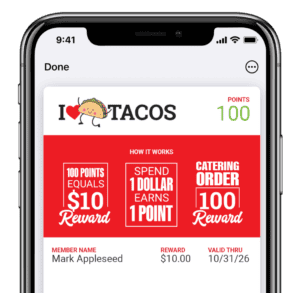

Pricing: 3.88/5
General features: 4/5
Advanced features: 3.5/5
Support: 4.75/5
Expert score: 4.25/5
Hootsuite is the most robust tool when it comes to social media marketing due to its incredibly useful analytics dashboard, which houses and displays all of your performance metrics through each social media account in one place.
This is huge, as you can create reports and track key metrics to focus your strategy and ensure the time and money you invest is being put to good use. Hootsuite’s tools are so advanced, you can even track organic vs paid vs earned content side by side.
Hootsuite’s biggest drawback is its price, which starts at $99 per user montly. While this may seem pricey, the tools you get to manage and grow your restaurant’s social media footprint are well worth the price. Hootsuite brings you competitive benchmarks, AI recommendations, and even a social listening tool that can help you track and predict social trends at an extremely fast rate.
Compared to the other social media tools I evaluated, Hootsuite’s competition wasn’t far behind. Buffer scored 3.99 out of 5, and Later scored 3.83. Its lowest scores were in pricing and general features, but it really pulled ahead in its advanced offerings and customer support.
What actual users say:
Hootsuite’s onboarding is some of the easiest and most swift of any of the providers in our guide. You simply sign up, log in to your social accounts, and work through the onboarding process.
Users claim one to two weeks max, and this is due to how easy it is for new users to set up and track their social media marketing. Hootsuite has a “Wise Widget,” which allows users to have a step-by-step walkthrough on both setup and effective management of the service.
Hootsuite is a simple app, mainly because the best way to get the most out of the app is to simply connect all of your socials to it. I could see the biggest hurdle for new users is actually remembering all of their social media account logins, so having these ready before launching Hootsuite is key.
Beyond this, the workflow is very simple. Once you sign into your accounts, you simply create content, schedule out when it is posted, and publish. Hootsuite offers a content calendar to easily identify when and where your content is being published.
Monitoring your marketing efforts is also extremely easy, with robust dashboards showing key analytics on your marketing performance. Creating AI-driven reports is simple enough, with guided tabs and automated backend tools.
Once you have all of your socials going with content, you can even train in the Hootsuite Academy to advance your understanding and expertise of the system. All of this leads to an incredibly engaging and easy workflow for new and current users.
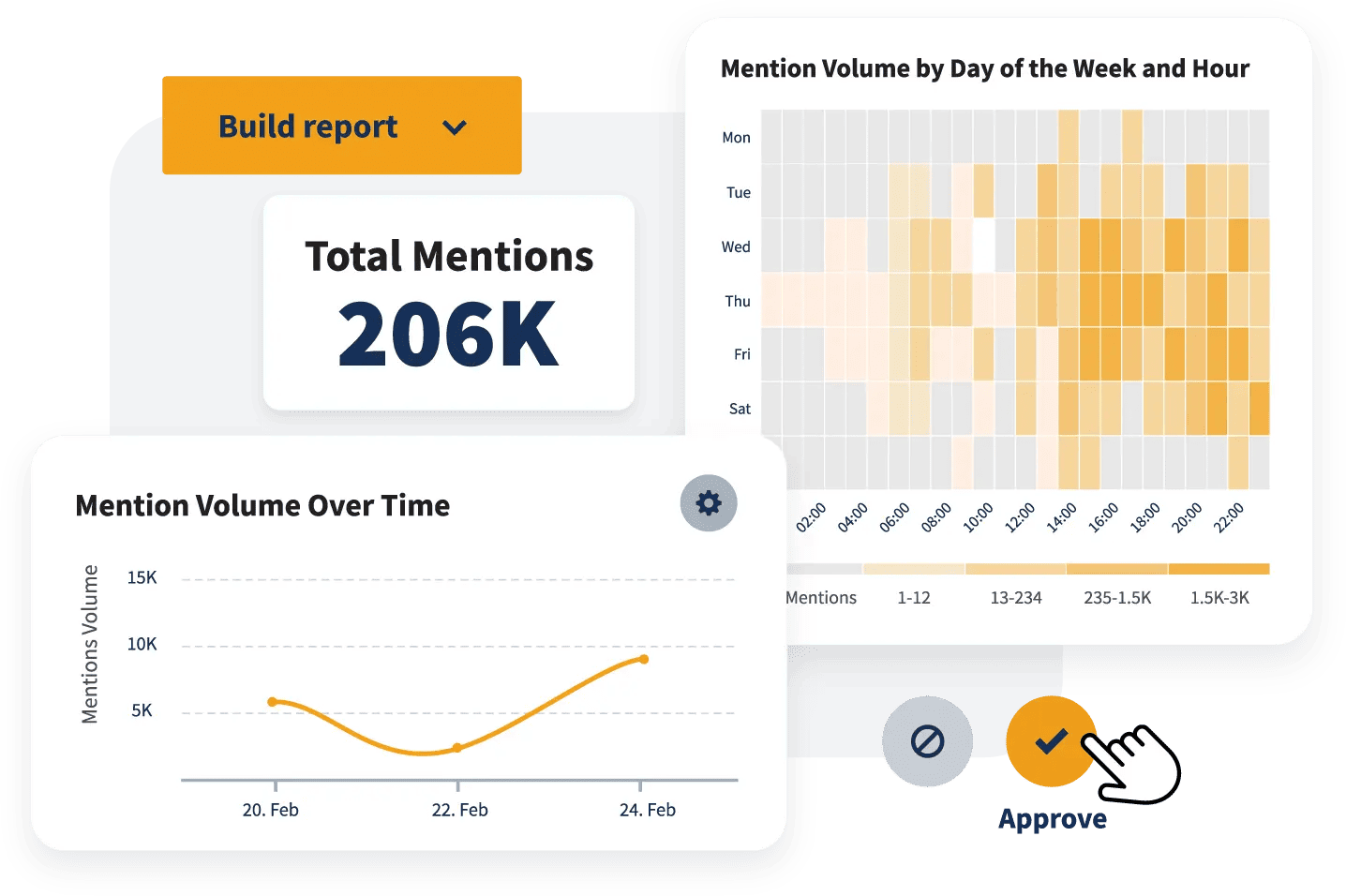
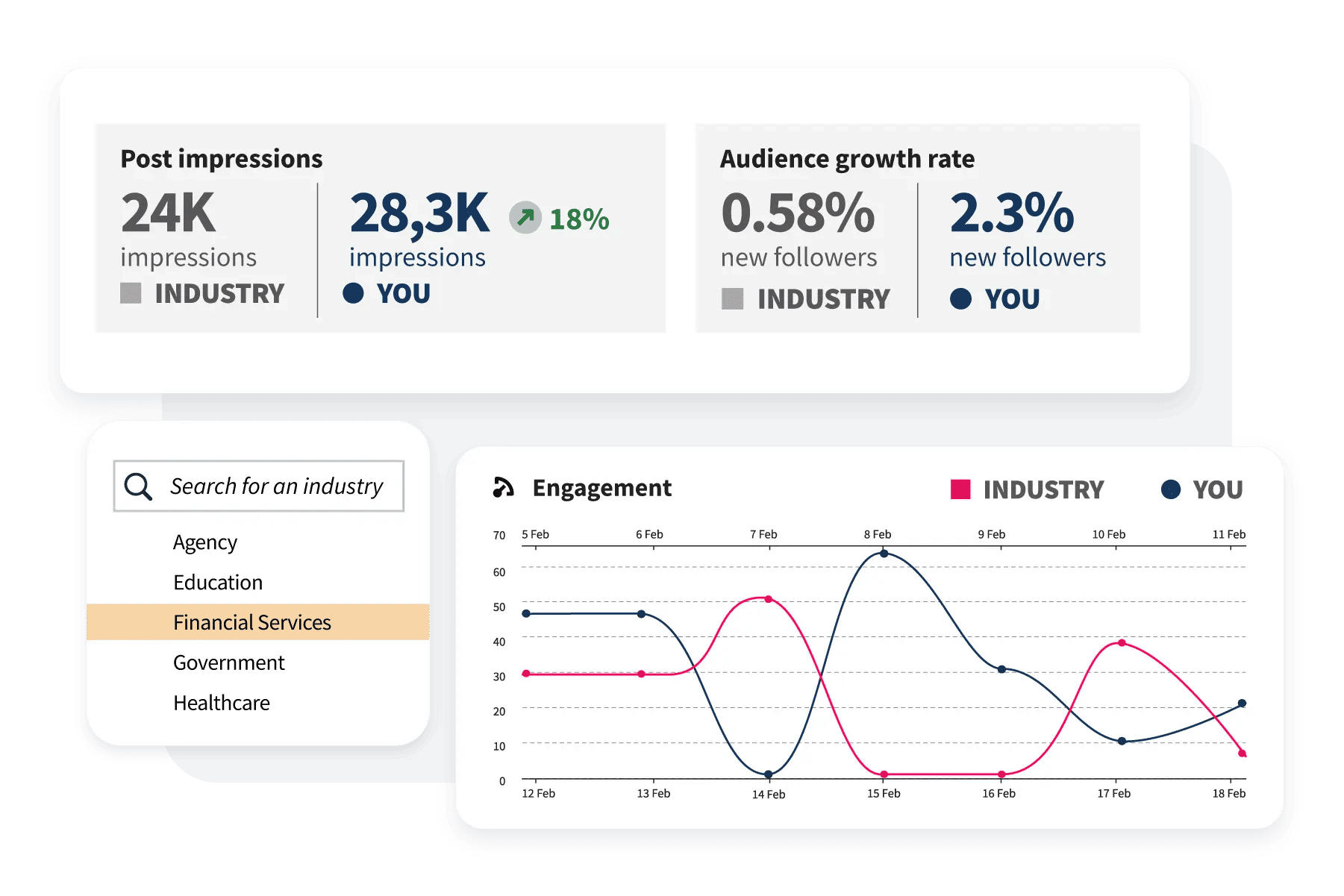

Pricing: 5/5
General features: 4.63/5
Advanced features: 4.44/5
Support: 4.81/5
Expert score: 4.63/5
Mailchimp is the go-to platform for email marketing in restaurants. For my guide to email marketing for restaurants, Mailchimp won the top spot for best email marketing tools. Mailchimp offers automated emails, mobile optimization, A/B testing, landing pages, and sign-up forms. They also use advanced audience segmentation logic to ensure your emails are targeted and make sense to the audience you’re sending them to.
One of the very few drawbacks to Mailchimp is that some of their more in-depth reporting tools are locked behind a more premium monthly subscription. That said, Mailchimp is highly affordable, generally easy to use, and is the best option for restaurants looking to improve their marketing through email and SMS.
Again, at least one of the tools I compared it to wasn’t far behind. MailerLite earned 4.71 out of 5, tying or nearly tying Mailchimp in all categories. Meanwhile, Klaviyo scored a 4.23 out of 5, mostly notability falling behind in my pricing evaluation. Really, you’ve got a solid batch of options for this area of restaurant marketing.
What actual users say:
Mailchimp is quite easy to set up, but there are some complaints about the limited use on free plans and some customer support constraints. Mailchimp can easily be set up in a day, with only the highest tiered subscription being the one that takes longer with specialized support.
The issue for new-user onboarding can come with the platform’s perceived lack of intuitive design. Mailchimp is an easy setup, but for new users can be a little tricky, especially on a limited free trial plan.
Mailchimp’s workflow relies on what they call “Tags,” which is a better way to organize and label your contacts. Tags, groups, and segments are the main audience tools you’ll find and use in the system, and these tools allow you to reach your target audience with ease and efficiency.
Tags are extremely easy to use. The best way of “tagging” key audiences is to reference them through the various contact lists they opt into. You can tag by user or in bulk, and your tags are easily customized and filtered for your viewing needs.
Another key aspect of Mailchimp is its ability to organize with segments. Mailchimp uses tags and segments to create audiences, which is a great organizational layer. For example, you may have different restaurant locations.
Each store can have its own email “audience,” which can then be targeted based on geographic region or whatever unique identifier each audience has. Mailchimp’s learning resources on audience, tag, and segmentation tools are super simple and should leave you ready for the workflow ahead.
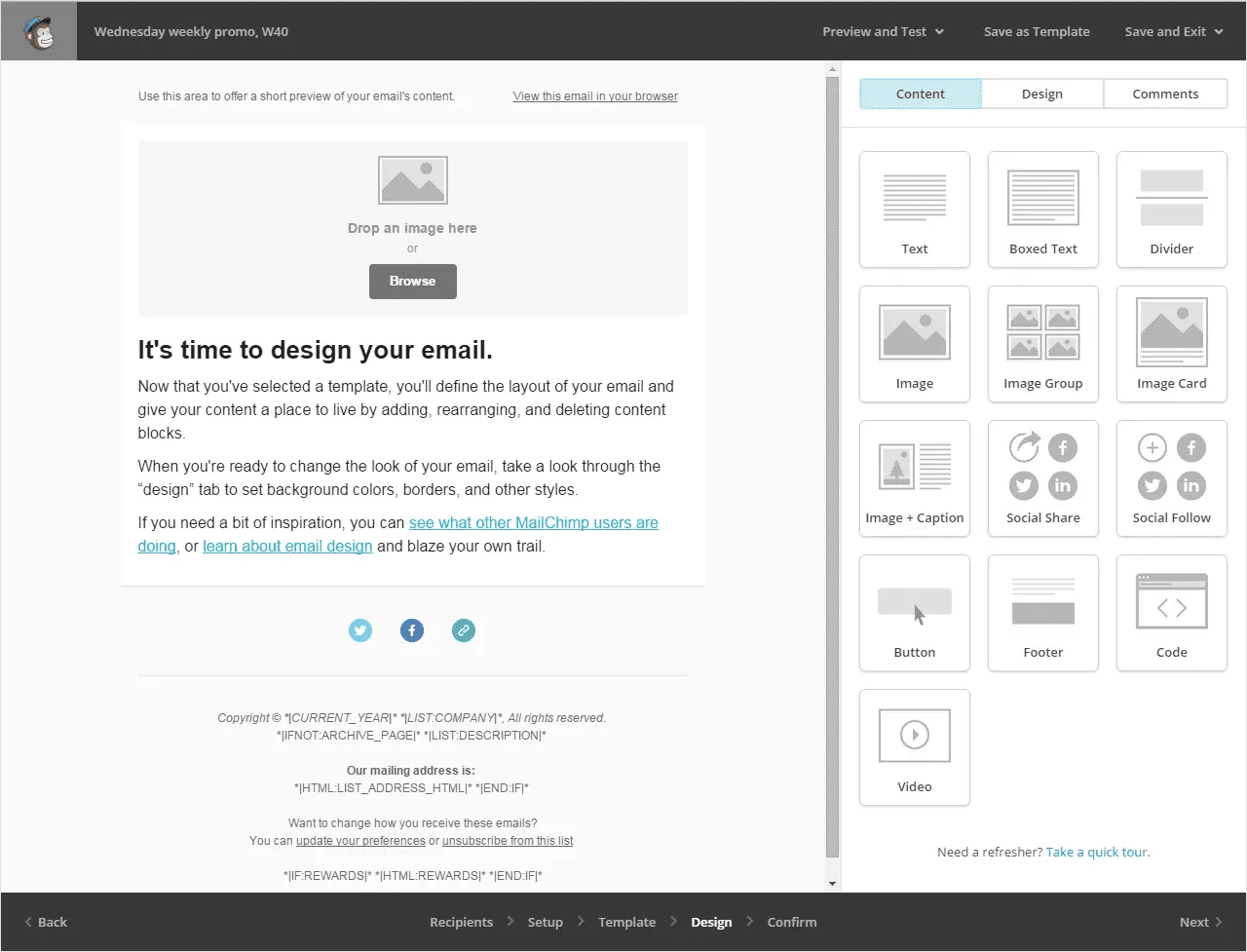
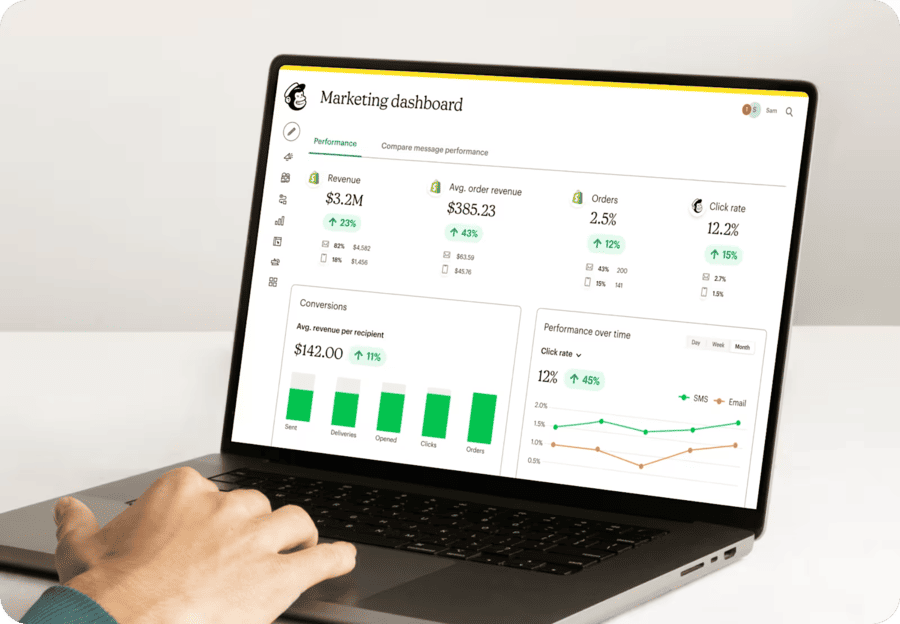
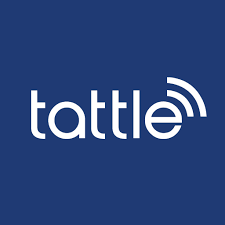
Pricing: 4.63/5
General features: 4.5/5
Advanced features: 3.88/5
Support: 4.81/5
Expert score: 4.5/5
Tattle rounds out my guide, being the best provider for review and reputation management. If you’ve ever managed a restaurant, you undoubtedly know how important it is to manage reviews and your business’s overall reputation.
Tattle offers direct integrations with a variety of POS systems and even other marketing tools I’ve already talked about, like Punchh, so you can mange feedback from any source. What’s great about Tattle is the ability to actually dig into why bad reviews were made, giving you the information you need to react and do better the next time a guest dines at your restaurant.
Tattle doesn’t offer a mobile app, which can be an issue for users who look for more flexibility. Tattle also doesn’t have a fully fleshed-out review reposting program, making it less efficient to share more positive reviews easily. Tattle focuses on both reputation management and guest retention, so if this is an issue with your restaurant, then Tattle may well be worth your while.
Again, the trailing platforms I evaluated only came in second and third by very small margins. Birdeye (4.44 out of 5) actually beat out Tattle in every category but pricing, where it fell behind for transparency. I weigh pricing pretty heavily, so even a small difference can mean losing the top ranking. Ovation rounded out this category with 3.87 out of 5.
What actual users say:
Unfortunately, I couldn’t find any evidence of online reviews or notes from actual users.
Tattle shares that the average setup time for the service is a week, with one to two months being the time frame for when you can get actionable data. Tattle does a strategy onboarding call that helps discuss goals, the dashboard setup, and how to launch the review software to manage your business.
Tattle’s onboarding process is relatively simple, allowing users to get going on their review management sooner rather than later.
Tattle’s dashboard is quite simple and allows you to set up surveys for checkout and manage menu item-level feedback on your guests’ satisfaction with each item. Tattle also lets you embed widgets on your website for better customer feedback opportunities, which are guided through YouTube videos and demos.
Tattle operates through guided setup, subscriber-only demos, and other resources that ensure you receive the feedback you need from the service.
To be transparent, there is limited customer feedback, as many of Tattle’s users tend to be larger-scale restaurant operations, such as MOD Pizza. Tattle seems to be better used for various locations, but if your business needs to attend to reviews, then Tattle is definitely the go-to option.
Just be aware that the setup may be complicated, but the overall workflow for gleaning key information from customer reviews is relatively simple.
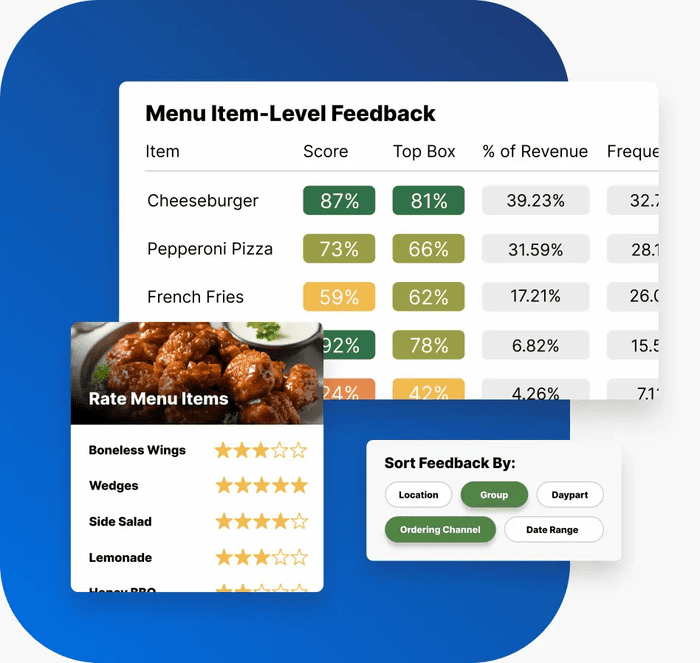
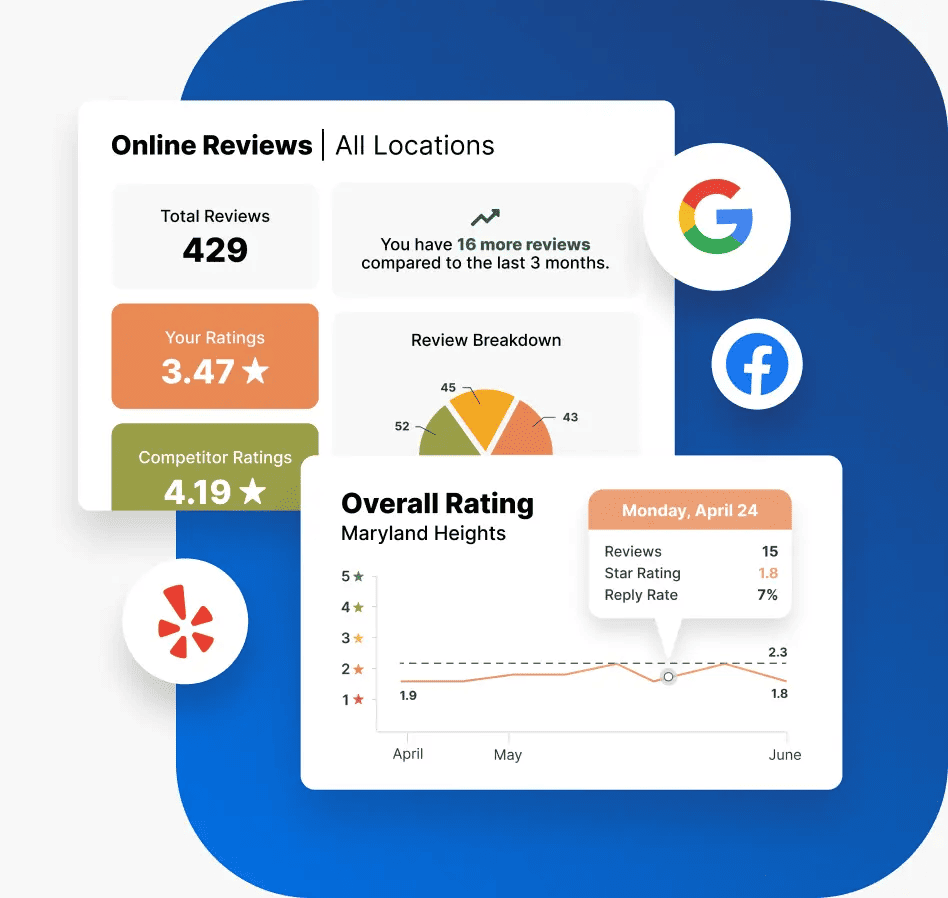
For this guide, I considered a variety of key factors to help you choose the best option for each marketing strategy. These factors helped identify strengths, affordability, and the robustness of use each tool has to offer.
Because I couldn’t evaluate each provider on a 1:1 basis, I compared them to other providers in their respective categories. However, because all-in-one POS systems offer far more than just POS and marketing tools, for example, I focused on their marketing and guest engagement tools instead of what I’d normally do, which is evaluate general and advanced features.
Pricing is a very important consideration for anyone using this guide to find the perfect marketing software for their restaurant. I considered whether each software offered a free trial, and the overall cost of its base price per month.
All categories evaluated pricing transparency. My pricing evaluation differed most in the all-in-one category, where I wanted to make sure I compared any add-on costs for marketing and guest engagement features. After all, I couldn’t say one provider had the best price if the tools I was reviewing made the system unaffordable.
The marketing features each software offered were critical to my decision-making process of how they ranked when compared to each other. Reporting and analytics, followed by campaign or AI-built templates for writing copy, were important across categories. Otherwise, each general feature’s subcriteria was unique to its marketing area.
With the exception of the all-in-one POS category, one of my must-haves was various integrations with major POS systems. Platforms with five or more POS integrations got film marks. Those with fewer than five received half credit, and those with no identifiable POS integrations earned no points.
In each category, I made sure to not just evaluate what features each vendor should provide but also features that allow users to scale. I considered these features nice-to-haves.
For loyalty software, that meant looking for tier-based programs, A/B testing, and gamification. Other advanced features across categories included AI tools or automation, behavior monitoring, ad management, and audience segmentation capabilities.
Restaurants are open at odd hours, and anything can happen during these hours. So I looked at how accessible customer service hours were and if each vendor offered live customer support.
I also checked to see if vendors offered onboarding or account managers for new account holders. Finally, I looked for online knowledge centers, product trainings, and demos that might help users reduce the total onboarding or set-up time.
My final expert score took into account the overall value for money a user would pay for each restaurant marketing software. Additionally, I considered the diversity of features and overall ease of use. This score reflects the usefulness of the tool and how effective it is in practice based on my own experiences and opinions.
Restaurant marketing can be a rewarding yet challenging task. Getting your name out there, attracting customers, and bolstering your business is key to growing a restaurant brand. That said, there are some key questions when it comes to restaurant marketing platforms.
When it comes to restaurant marketing, there are a variety of different platforms to market on. Instagram is great, as it blends beautiful photos of food and video content through Reels into one place, allowing you to share a variety of content through your account. TikTok, Facebook, and X are also great social media platforms for restaurant marketing.
Google Business Profiles are excellent ways to build authority and trust with your customers, so keeping your profiles up to date is vital. Email marketing remains a tried-and-true way of marketing your restaurant as well. Finally, having a thoughtful and engaging presence on sites such as Yelp can help your business address any issues and stay on top of guest concerns.
The best marketing for restaurants usually combines a clear online presence, especially through Google, a robust social media strategy, and thoughtful email marketing/SMS marketing deployment. By marketing to customers in a variety of media, you allow your brand to build an identity and reach a much broader audience.
A restaurant marketing strategy is the course of action you take to create more engagement, sales, and overall customer base growth through various forms of contact.
A marketing strategy can be as simple as a social media campaign on Instagram or as complex as a multichannel campaign rebranding your business across a variety of platforms. Marketing strategies grow your customer base, build your identity, and create trust with consumers when done right.
The best software for restaurant management is a point-of-sale system (POS). This software-hardware hybrid can manage a variety of different tasks. Reservation management, payment processing, order taking, and labor management are just a few of the many tasks that a POS system can manage or perform.
Word-of-mouth and organic engagement online are the most powerful tools in restaurant marketing. Word-of-mouth is key, as customers sharing with new customers as to why they enjoy your brand is a powerful driver to growing your business.
Organic online engagement is another powerful tool that grows your following on social networks, bolsters your brand, and makes your restaurant an authoritative place in online spaces.
When it comes to restaurant marketing, there are a variety of strategies you can take to grow your customer base. My guide showcases the different paths you can take to market your restaurant, with a tool in each category for your specific marketing needs.
SpotOn is the best all-in-one restaurant marketing software in 2025 for restaurants, but if you’re happy with your current POS systems or chasing a specific marketing strategy, a standalone tool with POS integrations might be a better fit.
Ray Delucci is a graduate of The Culinary Institute of America with a Bachelor’s in Food Business Management. He has experience managing restaurants in New York City, Houston, and Chicago. He is also the host of the Line Cook Thoughts Podcast, where he interviews and shares the stories of foodservice workers. Ray currently works in food manufacturing and food product development.
Property of TechnologyAdvice. © 2025 TechnologyAdvice. All Rights Reserved
Advertiser Disclosure: Some of the products that appear on this site are from companies from which TechnologyAdvice receives compensation. This compensation may impact how and where products appear on this site including, for example, the order in which they appear. TechnologyAdvice does not include all companies or all types of products available in the marketplace.